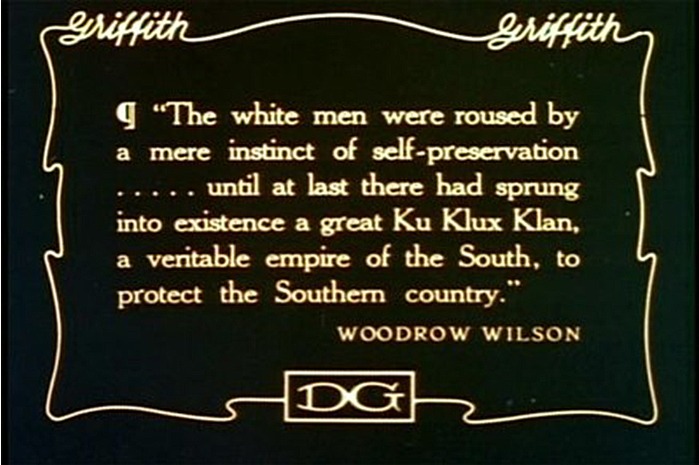I chose the second question, Film as History, to answer for the first blog.
Here is the Question in its entirety:
“What filmic and narrative techniques does Griffith use to make us think we are watching a true, objective version of history (when clearly we are not)? List them.”
Here is my answer:
D.W. Griffith used many foundational tricks of film making, making it really important for film history. Unfortunately, the purpose of the film is to portray the Ku Klux Klan as the hero in a Post-Civil War south and portrays abolitionists as radicals, african americans from the north and newly freed slaves from the south as enemies, and the old south as a victim. The movie had a budget of $110,000 and received $60,000,000 in the box office. This film could easily be described as the exact opposite of Uncle Tom’s Cabin.
Griffith uses intertitles throughout the film as both quotations and excerpts from history books but mainly as narrative and speech. There is a scene near the intermission that is written by President Woodrow Wilson. This gives a historical feel to the situation, as does the entire first half of the movie with plenty of civil war reenacting. This first half of the movie being fairly unbiased, and then panning to the second half full of Post-war South sentiments made it feel historical but that could be because it is based on a historical-fiction novel by the name of “The Clansman.”

I think that the easiest way that Griffith made it feel historical was by making everything period dress. The costumes were very ornate and symbolic of the characters that were being portrayed. This made the film pretty easy to understand especially without sound. (besides the original orchestral arrangement for the movie) Using the costumes in this way, I believe that Griffith instilled a sense of nostalgia in people. The Civil War had ended exactly 50 years prior, and many of those who had lived during the war or even after the war had felt some forms of repercussions; family members fighting in the war, living through the Reconstruction period, animosity towards government and the turn towards vigilanteism all set the perfect background for this movie to be recruitment for the Second Ku Klux Klan.
Overall, Griffith portrays the movie as an objective historical film under the guise of artistic liberty, though in reality there were several undertones. Griffith had been a product of a home that was heavily influenced by the Civil War, especially being born to an officer of the Confederate Army in 1875. There is a lot of background on Griffith that would make his reasons for filming The Birth of a Nation make sense; but no matter what background is given his, there is no doubt that his portrayal of Reconstruction era south and glorification of the Ku Klux Klan influenced people for decades.